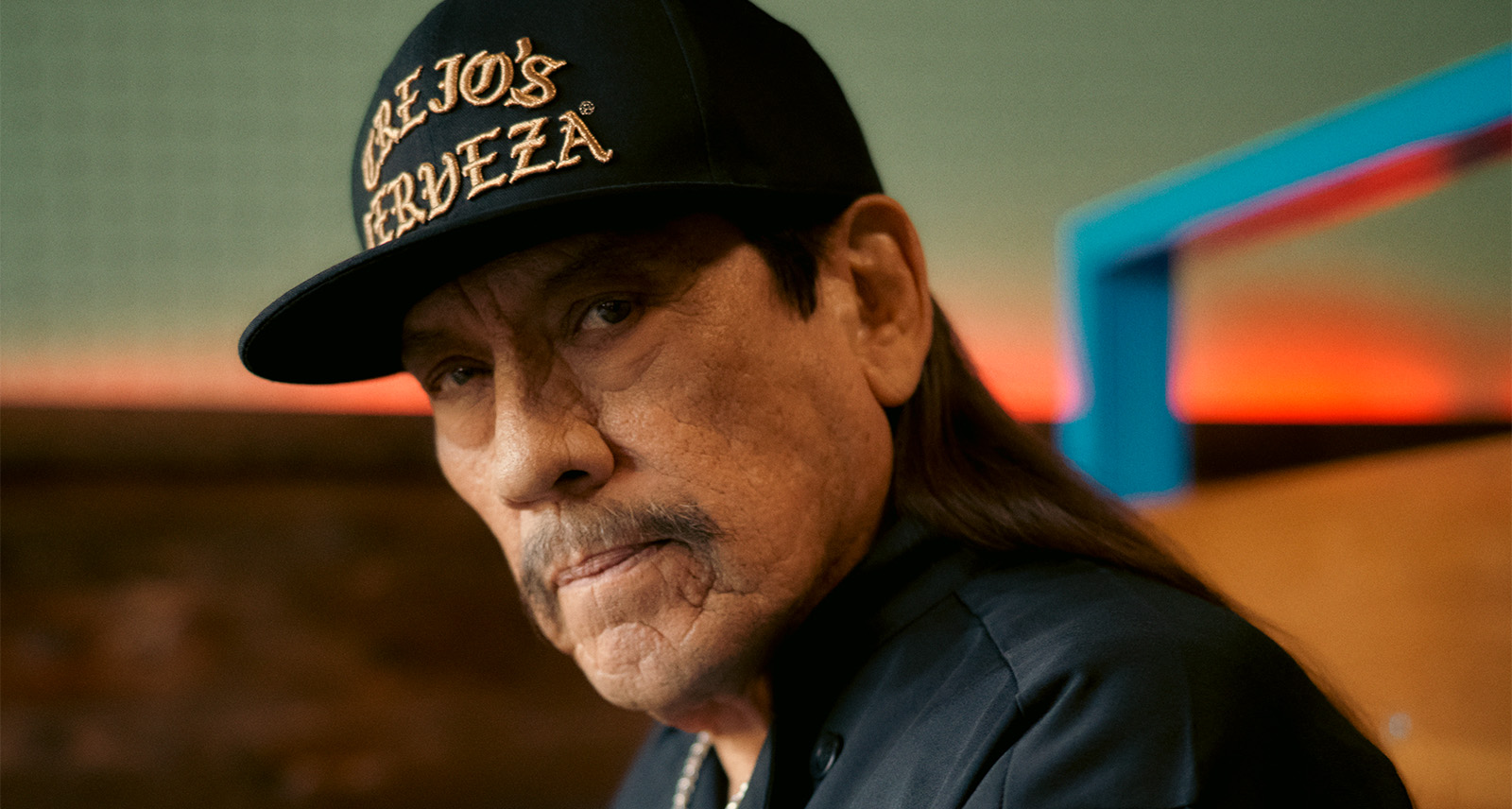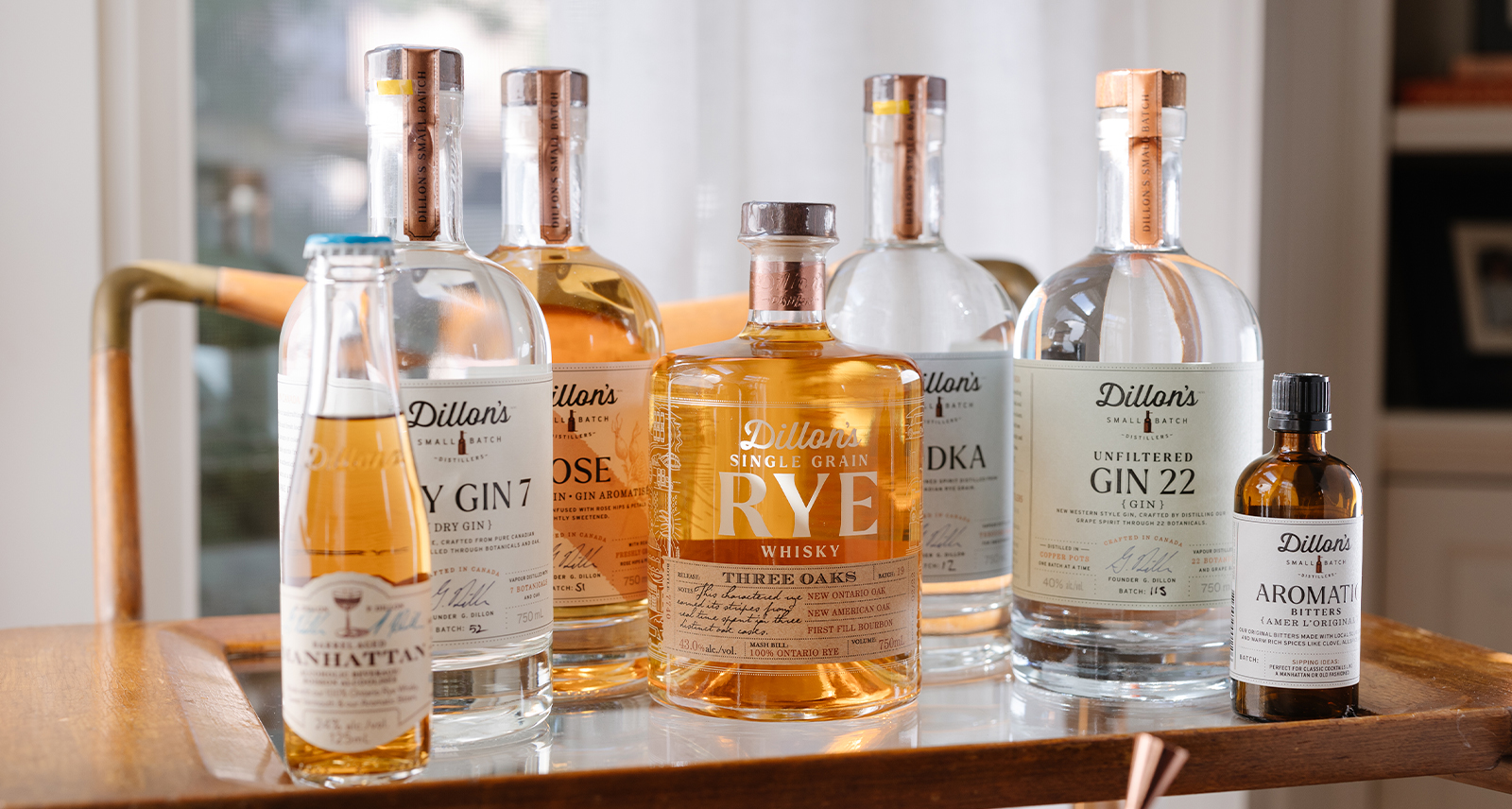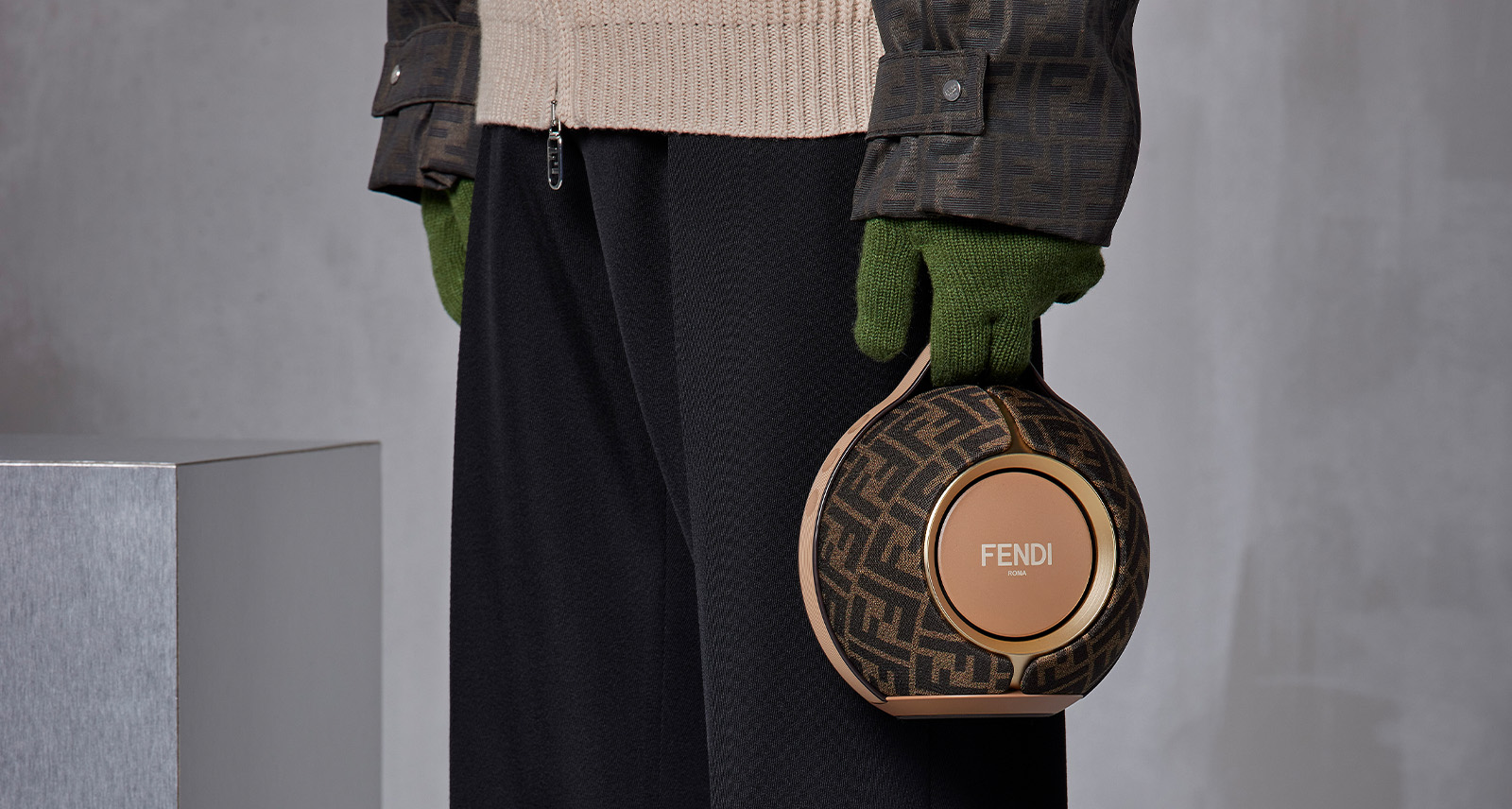Together at Last: Danny Trejo Is Making Moves From Screen to Kitchen
When it comes to actors, Danny Trejo makes a distinction between givers and takers. “The real pros, they’re givers,” he explains. “The takers will make the scene all about them, whereas the best actors will give you exactly what you need to make your part great.” It’s easy to see — both as one of the most prolific character actors of the ’90s and 2000s and as a human being — that Trejo is a giver.
Trejo has leveraged his stature as one of the most recognizable ‘bad guy’ faces in Hollywood to become an advocate for youth sobriety, speaking at local schools in Los Angeles about his experiences with drugs and alcohol. Having been introduced to marijuana at the age of 12 and heroin at the age of 14, before serving time at the notorious San Quentin prison in his youth, his message is sure to resonate more than most.
In 2019, Trejo launched a record label called Trejo’s Music, which offers a platform for up-and-coming young artists. More recently, he was helping to feed those in need during the lockdown, from the homeless of Los Angeles to essential workers like nurses and hospital staff. He even brought food to police officers during the riots in the city. “I think that’s why the good lord kept my restaurants open even during the pandemic,” he says.
What started as a business plan for a single Trejo’s Tacos location has grown into five restaurants across Los Angeles, including the titular Trejo’s Cantina in Hollywood. “Sometimes my friends will go in incognito, to tell me how the service and the food was,” Trejo laughs. “And my staff will say, ‘Dan, we know that all the guys with tattoos on their necks are your spies. They’re the guys that look like they’re going to rob the place.’”
SHARP spoke to the multi-hyphenate about the beauty of nonalcoholic drinks, what the spirit of the cantina means to him, and the inspiration behind his newest cookbook, Trejo’s Cantina.
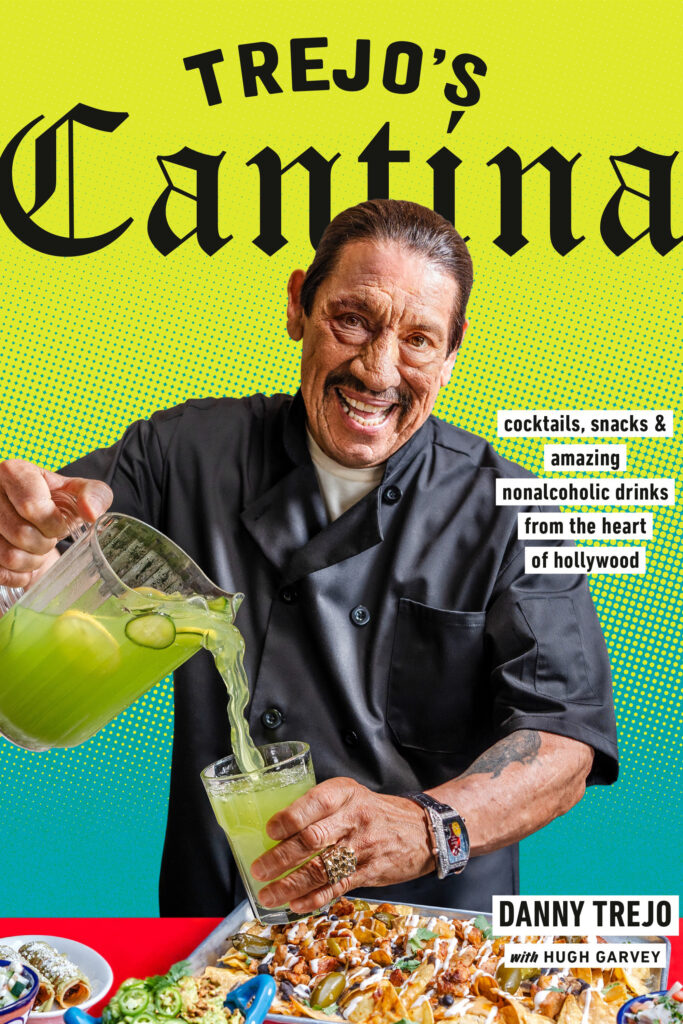
Your first cookbook was mostly recipes from the menu at Trejo’s Tacos. What made you want to write a second?
Really, it was the response from the first book. We sold a lot of books, and a lot of people were asking me, “Do you have any more recipes?” And we do! I mean, my mom gave me her whole 80 years’ worth of recipes.
You talk about your mom quite a bit in the new book. Is there a lot of your family’s influence in this batch of recipes?
Everybody’s. My grandmother, my aunts, but especially my mom. She was just an amazing cook. At the first of the month, we would have these unbelievable meals, like Carne Asada and Carne Verde. Then by the middle of the month, the food would get a little thinner, you know?
By the time we got to the end of the month, she had a thing called We Mix It, and it was basically leftovers and whatever was in the cupboard. It was really good and all, but don’t ask her that recipe, you know? [Laughs] Because you don’t want to know it.
“When I walk into the cantina and I see everybody enjoying themselves, I get that same feeling of comfort and safety. Safety is one thing in the joint that’s hard to come by.”
Danny Trejo
It was like in the penitentiary. We would get, like, five cup-o’-noodles, potato chips, Fritos, some hot dogs, whatever we could get, and we’d mix it up and bake it, and we had a You Mix It. Except in there we called it a spread. All the guys who don’t get a visit on Visitor’s Day, they would each bring something into the yard, and we would have a spread.
You mention that in the book, and how it seemed you turned that corner of the yard into your own little cantina. Can you describe what the cantina means to you?
What the cantina means to me is a big group of friends getting together and sharing everything they have. Because in the pen’, all you have is the money that people send you, and the hustle that you do in the joint. And so you share everything you’ve got like a big family.
When I walk into the cantina and I see everybody enjoying themselves, I get that same feeling of comfort and safety. Safety is one thing in the joint that’s hard to come by. But that’s the way you feel in the cantina.
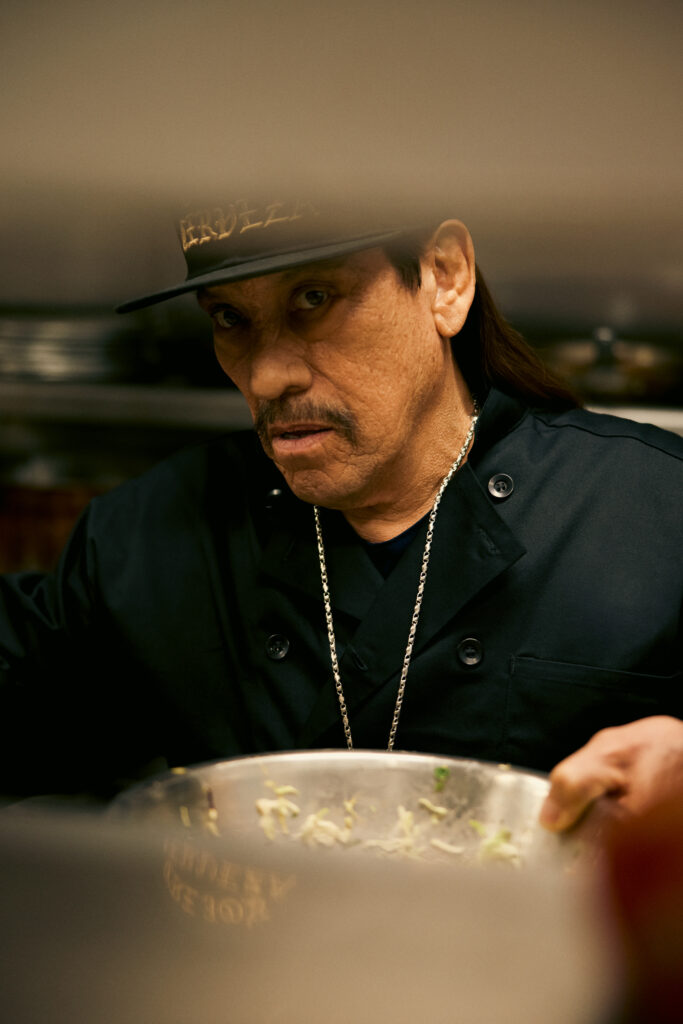
What I love about this book is that you give so much detail and history to each ingredient and aspect of a dish, but you also stress that every recipe is modular, and you can adjust to your ingredients and preferences. How important was it for you to have a book that was approachable?
I had to have a remedial kind of book. You know, some of my mom’s and grandmother’s recipes are a little vague — “un poquito de sal!” And you had to get just the right pinch! [Laughs] So I definitely wanted to make sure it was simple.
I get nothing but compliments about the first book. People say, “Hey, my wife and I, we try a different recipe once a week, and it’s really simple!” I’m glad they say that, because that’s what we were trying to do, and it’s the same with this new book.
Do you have any favourite recipes from the book you might recommend to people who are a little intimidated by cooking?
The Shrimp Tostadas. I like that one because it’s so simple and so delicious. And my favourite drink, The Mexican-Spiced Cranberry Juice, and Sprite. I can’t tell you what the Mexican Spice is though, or I’d have to kill you. [Laughs]
We have a lot of nonalcoholic drinks in this new one, and I’m very proud of that. Because a lot of the time, people don’t want other people to know they’re not drinking. Plus, if you’re going to spend a long time in a restaurant talking, it’s better not to keep pounding them down.
“They were taking pictures of these big burly guys on a 10-speed, and then all these spandex clad guys on Harleys. And business hasn’t slowed down since.”
Danny Trejo
I never really considered that, how the non-alcoholic drinks allow you to blend in.
It’s one of the reasons we’ve got non-alcoholic drinks at Trejo’s Cantina. I don’t drink, I’ve been sober for 50 years, but when I go to a bar or nightclub, people are always trying to buy me drinks. So I always have to turn them down, and they ask why. Usually, if I’m in a bar setting, I say “Oh, because when you get good and drunk, I’m going to take your wife home,” [Laughs] They shut up real quick! Don’t tell my agent that one.
I love how, in the book, you’re very against the word “mocktail” because you put as much effort into these drinks as the alcoholic ones.
They’re delicious! I love them all.
When did you first know you wanted to open a restaurant?
I did a favour for a director named Craig Moss, who needed a name actor to star in a movie he was making. I was gonna say it was low budget, but at least with low budget they’ll give you a sandwich. [Laughs] This was a no-budget movie!
I showed it to my agent Gloria and she said, “This might be pretty good, Dan, it’s a good story.” At the time I was waiting on another film that would have a real paycheque coming, but she convinced me that this one would be a better idea. So I took this movie called Badass and this thing turned into a trilogy, and I ended up making three times the money. Listen to your agent!
On the first movie, I met a producer named Ash Shah, who had been in the restaurant business, and he noticed that I don’t eat processed food. I won’t go to the Jack or the Mac, I’ll eat good food. So Ash noticed and said, “Danny, you love good food, why don’t you open a restaurant?” And jokingly I said, “Trejo’s Tacos!”
Then, after the third Badass wrapped, Ash brought me a business plan. It was about 12 pages long. I opened the first page, and there was no killing, so that was a tough read. [Laughs] But I gave it to Gloria, and she said, “Dan, this is a no brainer.” So that’s why I’m in the restaurant business!
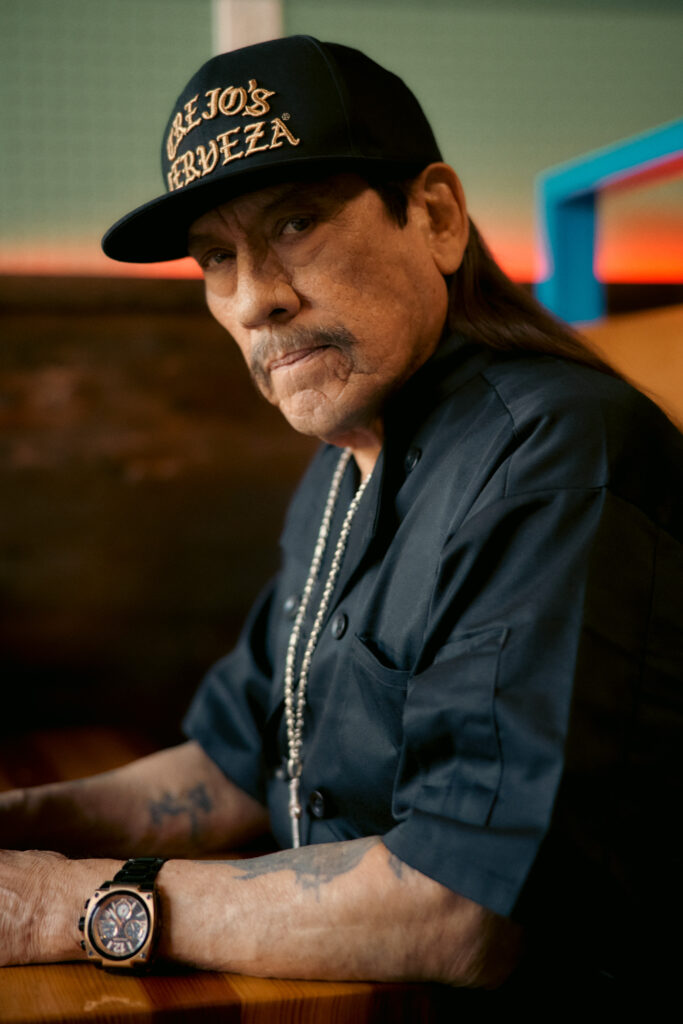
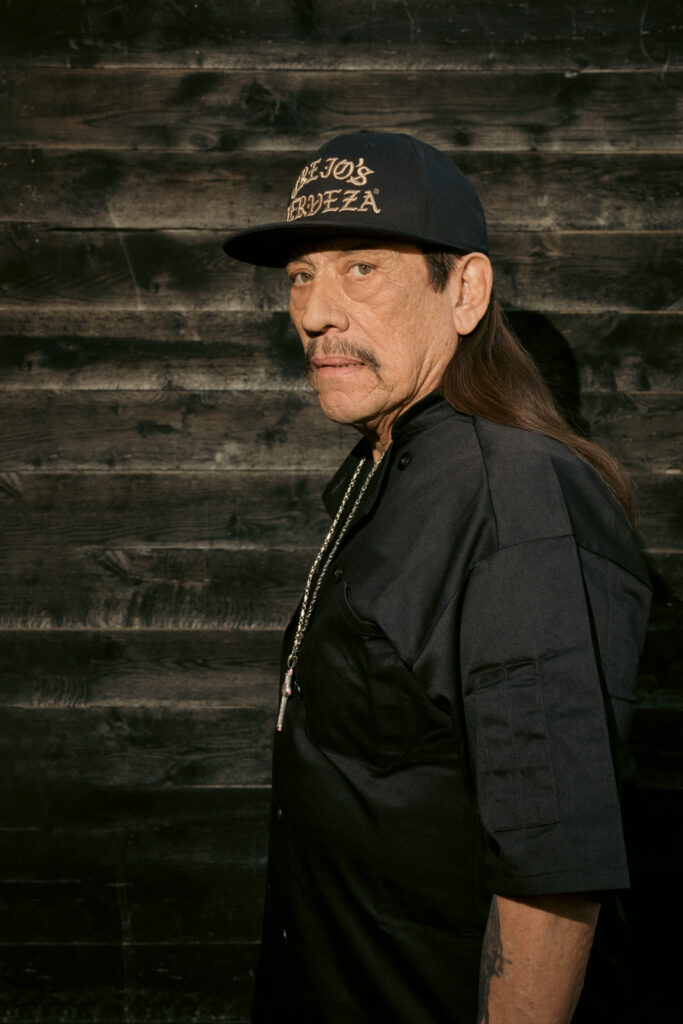
You’ve said people come from all over the world to visit the Cantina. Do you have any notable stories?
It’s funny — when we were first opening Trejo’s Tacos, this bicycle club from Manhattan Beach posted that they were going to have a run to the opening in La Brea. But when the trades reported on it, they didn’t say bicycle run, they just said “bike run”.
So all these bikers from the Inland Empire saw it and were like, “hey, they’ve having a bike run!” [Laughs] And at the grand opening, we had this huge crowd of both spandex cyclists and the leather wearing bikers. They were taking pictures of these big burly guys on a 10-speed, and then all these spandex clad guys on Harleys. And business hasn’t slowed down since.
We’ve been really blessed that all five have stayed open. And everybody says, “what’s your secret,” because we’ve been open now for almost six years. Everybody thinks it’s a big secret, but it’s not! It’s just good food! I’ve never heard anybody going on a date saying, “Hey babe, you want to go to this restaurant? They’ve got really crappy food.”
Do you have any future projects you’re looking forward to?
We have an album out now called Trejo’s Soul Collection Vol. 1, and the next album is going to be called Souldiez Are Forever. In fact, we’re holding a concert at the Fillmore in L.A. at the end of March.
We’re opening a new restaurant in Detroit, but we’re doing it as a house of blues venue. We’re doing one in London as well, so I’ll be traveling. I have great partners in Ash Shah and Jeff Georgino, and they are masters, just brilliant.
In fact, Ash is the one who got me into opening a restaurant in the first place, because — and don’t tell anybody — but I didn’t know anything about running a restaurant.
Find a copy of Trejo’s Cantina by Danny Trejo here.
